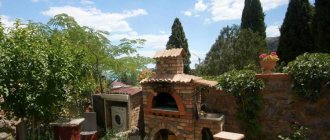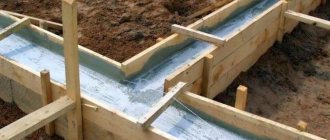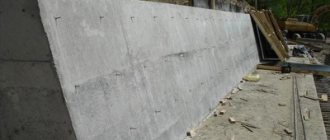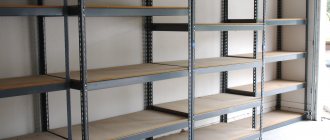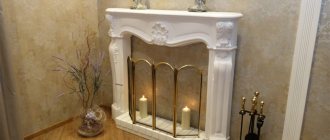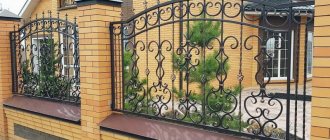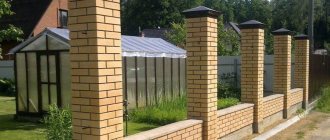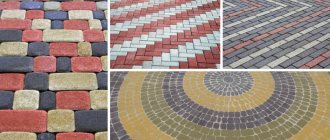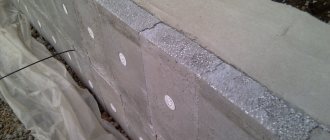Today, countertops made from artificial stone are incredibly popular for several reasons. Firstly, they are strong and durable. Secondly, you can make a countertop of absolutely any size and with any curves from artificial stone.
Skilled craftsmen are interested in how a countertop is made from artificial stone. The good news is that with minimal carpentry skills and the right tools, you can make your own countertop. Moreover, it will be unique, without analogues.
Countertop with sink made of artificial stone
So, there are two main ways to make a countertop:
- from ready-made acrylic sheets;
- from polyester suspensions (the so-called liquid stone).
Both options can be repeated by any master. They differ in the technological process and, in fact, in the materials. Let's find out in more detail how countertops are made from artificial stone.
Technology for creating tabletops from ready-made acrylic sheets
Acrylic sheet is more popular in carpentry than polyester blends. The fact is that the sheet is solid - it only needs to be adjusted to certain dimensions and installed on the plywood. Sheets with thicknesses of 3 mm, 6 mm, 10 mm, 12.7 mm, 30 mm are available for sale. A standard acrylic sheet measures 3660 x 760 mm, although there are non-standard options. Before starting work, you should decide what kind of tabletop you should end up with.
Tabletop diagram
It is easiest to work with a rectangular tabletop. You can cut holes for the sink and faucet at the end of the work, already on the finished product. For work, prepare:
- acrylic sheet of your favorite color;
- Fiberboard, MDF or (better) moisture-resistant bakelite plywood, which will act as a substrate;
- epoxy adhesive from an artificial stone manufacturer (Samsung, DuPont, etc.);
- sheet of whatman paper or cardboard;
- ruler, pencil.
Tools you will need:
- glue gun;
- cutter;
- jigsaw;
- Grinder;
- orbital sander;
- vacuum cleaner;
- circular and miter saws;
- drill;
- milling cutter;
- cutters equipped with carbide blades;
- instruments for taking measurements;
- guide bar;
- clamps.
So, we make a countertop from artificial stone with our own hands
First you need to make a life-size drawing. On a sheet of Whatman paper or cardboard, mark the future tabletop using pre-collected measurements. Mark the holes for the faucet, hob, and sink. The standard working surface depth is approximately 60 cm. However, with the edge and end side, about 5-10 cm will be added on top. Remember: acrylic sheet begins to bend at temperatures above 160 degrees Celsius.
Preparation of the drawing
Why choose liquid stone for countertops ↑
Liquid stone is the lining of a prepared surface with mixtures of polymer resins and special fillers. First, a sheet of chipboard is cut to shape, coated with a primer, and a layer of finishing compound is sprayed on top.
The technology of applying liquid stone is fundamentally different from the manufacture of products with sheet material, which is attached to the surface using a composition of the same color so that the joints are not visible.
The coating is resistant to corrosion, retains its color for a long time, and resists mechanical damage well. Fungi and mold do not grow on the material, and it does not absorb dirt. Damaged areas are easy to restore.
Liquid stone for countertops
The disadvantages of liquid stone include its strong dependence on changes occurring in the base. Chipboard and fiberboard sheets are subject to deformation when exposed to moisture. Due to the fact that the material is applied in a thin layer, it, just like the base, can change its shape.
The choice of colors and textures of liquid stone is smaller than that of acrylic, but many buyers still choose it. In this case, ease of application is of prime importance. The buyer can make a solid countertop with a sink from liquid stone with his own hands. The coating will be neat and seamless.
Original kitchen design with liquid stone
Next, you need to assemble a frame or substrate for the future tabletop
The choice is chipboard, fiberboard, MDF, but it is best to take bakelite plywood, since it will not absorb moisture. The minimum thickness of plywood is 3 cm, since it will have to withstand the weight of artificial stone. Using a guide rail, cut the frame exactly along the contour of the workpiece. The saw cut should be milled. The frame can be made not from a single sheet of plywood, but assembled from 7 cm wooden strips, which will be much cheaper, but will take a little more time. We also drill holes in the corners of the plywood with a drill. The holes for the sink and hob should be carefully made using a jigsaw.
Forming the tabletop frame
What to make a countertop from
Light artificial stone can also be used as a kitchen island countertop
The stone may differ in both color shades and texture
Necessary tools for work
To make a countertop with your own hands, you need to have a certain set of tools, which are presented below:
- Drill;
- Grinding machine;
- Jigsaw;
- Fraser;
- Excellent quality cutter;
- Glue gun;
- Vacuum cleaner;
- Guide bar;
- Circular saw;
- Measuring instruments.
Tabletop materials
The tabletop can be made from several types of materials. Therefore, it is first necessary to determine what it will be made of:
- Ceramic tile . It looks best in the bath. But, if you choose the right tiles, you can also make them for the kitchen.
- Concrete . Most often, concrete is used for major renovations. But if desired, you can also get a wonderful concrete countertop. Various fillers and additives will give it beauty and grace.
- Artificial finished stone . It is sold as an acrylic base with granite or marble filling.
Concrete can also be different - light or dark. It all depends on the initial concentration of the elements of the mixture
A concrete countertop will be an ideal option if your kitchen is designed in a loft style
Once the materials have been determined, construction of the countertop can begin. This process will be described step by step in order to better understand all the aspects of manufacturing the structure.
Artificial stone is also cut into its component parts
It's easier to work with a simple rectangular design. All you need to prepare is: the tabletop itself, the wall edge and strips for processing the ends. If the future tabletop is expected to have smooth curves, then the acrylic sheet should be heated to 160 degrees using a hair dryer and bent. A sheet of artificial stone is cut either with a circular saw along a tire, or on a format-cutting machine. The size of the acrylic sheet should be greater than the thickness of the backing by the thickness of the edge (that is, the thickness of the sheet). For example, if a tabletop made of 7 mm stone is glued, then the backing should be 593 mm wide (for a standard 600 mm tabletop), and the width of the acrylic stone sheet in this case will be 600 mm.
Forming a countertop from artificial stone
Porcelain stoneware countertops 60×60 cm
BarettaFORUMHOUSE member
I really wanted a stone countertop, but I didn’t have enough money to buy one. I made them myself in porcelain stoneware - tiles measuring 60x60 cm, polished to an almost mirror-like state. Three tiles cost about nine hundred rubles, plus I bought additional sealant and glue. The rest is leftovers from renovations.
What remained from the renovation was a sheet of OSB, from which Baretta cut a piece to fit the dimensions of the tile to use as a base. Since the thickness of the OSB was not enough, I increased the missing part with pieces of chipboard screwed onto self-tapping screws. I also screwed the resulting base to the cabinet using self-tapping screws from the inside and coated it with primer.
The first experience of gluing large-format porcelain tiles to OSB using ordinary tile adhesive failed - as the slab dried, it moved away from the base. Therefore, instead of tile adhesive, I had to use liquid nails; this method showed good results.
The aluminum end strips are also from leftovers, it was precisely because of their dimensions that the base had to be increased, but Baretta considered it inappropriate to buy a suitable size, paying 2/3 of the cost of the tiles. The metal is soft, it cuts well with a hacksaw, but it also bends easily, you need to be careful; To prevent the edges from catching, I cleaned it with a grinding stone. I screwed the planks into the thickness of the slab with self-tapping screws, having previously liberally treated the ends with transparent sealant.
The result was completely satisfactory, both in terms of aesthetics and practicality, and in terms of costs.
Baretta
I would like to note the incomparable convenience of polished porcelain stoneware: it is not afraid of heat, you can cut on it, and it is easy to clean. In terms of money it turned out to be very affordable. I would like to express my deep gratitude to those who write reports on the work done. It helps others gain experience. I've read a lot on this forum. Forum members, thank you! I couldn't do it without you.
Another of our forum members, Sukhov76, made both work surfaces and an apron from porcelain stoneware - he laid the slabs end-to-end along the length of the countertop, cutting out holes for the hob and sink. Instead of a metal end strip, I installed a wooden one. According to him, it turned out very well on a budget and looks impressive.
And the downside is known to all housewives - plain dark surfaces are very easily soiled. Sukhov76 recommends that followers take variegated porcelain tiles that imitate natural stone.
Or light, like BuddaNsk, there are no problems with it, “but a black hob is a disaster.”
Next you need to glue an edge cut from a sheet of the same acrylic stone
These are strips corresponding in thickness to the future tabletop. The surfaces to be bonded must be cleaned with a grinder for better adhesion. After the procedure, you will also need to degrease the surface with acetone or alcohol. Only after this is glue applied to the edge, which is subsequently tightened onto the tabletop using clamps. The structure dries in about 40-60 minutes - it all depends on the chosen two-component adhesive. At the end of the work, the remaining glue must also be cleaned off with a chisel or cutter.
Types of Curly Edges
Ceramic tile countertop
You can also make a countertop from ceramic tiles with your own hands. But, unlike the previous options, it is more suitable for a bath. Her presence in the kitchen is very doubtful, although there is no dispute about tastes.
Laying tiles on a countertop is done quite quickly and does not require any special skills. You can find out how to do this yourself in our “Repair” section.
Tiles on the countertop are a practical solution, but some may not find it cozy enough, since the material is considered cold
This tabletop looks like a horizontal surface with ceramic tiles or regular tiles laid on it. The basis is an OSB sheet 2 millimeters thick. An alternative would be ordinary plywood, which is not affected by moisture.
You can cut the base of the tabletop yourself . The end is formed from strips that are the same material as the base. After this work is done, the base is completely primed. Next, tiles are laid on it using any adhesive compound.
Modern artificial materials
Artificial stone belongs to the group of composite materials, which are based on:
- fillers;
- pigments (mineral);
- polymer resins (binding components).
From acrylic in the bathroom
Depending on the type of resin, several types of material are distinguished. For example, when using acrylic resin, a durable sheet of stone is obtained that is resistant to high temperatures (up to 200 ° C); due to this characteristic, the countertop can be used mainly in the bathroom. For the kitchen, a more heat-resistant material containing polyester resins is suitable. They can withstand temperatures up to 600° C.
In addition to resistance to high temperatures, several more advantages of artificial stone can be highlighted:
- affordable price;
- water resistance;
- strength;
- long service life;
- wide palette of colors;
- the ability to carry out restoration and repair work;
- environmental friendliness;
- safety;
- ease of care.
Made of polyester resin
Against the background of such a list of advantages, it is necessary to highlight only one drawback: the tendency to scratches and other surface defects. If you study the properties of the material more carefully, you will be able to highlight more pros and cons, but the most basic and important ones have been considered.
Note!
You can make a sheet of artificial stone yourself. To do this, a mixture is prepared from the components, which is subsequently applied to the chipboard (base) or poured into a special mold.
Wood-effect porcelain stoneware countertop
GlobalWS has a homemade set - laminated chipboard sheets as supports for tabletops and shelves, plus a wooden beam is fixed along the perimeter of the wall. The base is made of plywood, 15 mm thick, the floor porcelain stoneware imitates wood, the edging is made of the same, only sawn.
This is his second positive experience with the use of non-specific material. By the way, floor porcelain tiles can also be used as roofing.
GlobalWSForumHouse Member
In terms of strength - the first time I did it with regular tiles, no problems arose during the entire period of use, although something was periodically dropped on the surface, the tiles were not scratched or chipped anywhere. This time I used porcelain floor tiles - no complaints about durability at all. I tried to damage the remainder on purpose, to no avail, even a drill does not leave any marks. Regarding the reliability of fixation - liquid nails hold the side edging perfectly, nothing falls off or wobbles.
Porcelain stoneware countertop 30×30 cm
When there are no leftovers, the budget depends on the dimensions, medved323, I planned to make the apron and tabletop from 30x60 cm tiles, “but the price quickly became sobering,” I bought 30x30 cm tiles. However, I am happy with the result.
medved323FORUMHOUSE Member
Keeping a tile countertop clean is not easy. But, of course, it looks great - only polished marble is better.
Manufacturing process
Using an example, let's look at the production of a standard rectangular tabletop with the following dimensions:
Processlength – 76 cm;
- width – 60.5 cm.
So, we transfer the data obtained after measurements to a sheet of plywood and artificial stone. Using a router, we trim the edges of the tabletop itself and form the contours of the cutouts for the sink and hob. Turning the tabletop over to the wrong side, we process the profile, that is, we apply a groove 20 mm deep under the edge. You need to cut several strips from a sheet of plywood to form a frame (the width does not exceed 7 cm).
Note!
Before applying an edge to an artificial stone, it is necessary to clean and degrease the surface. Both alcohol and acetone are suitable for this.
The next stage of making the tabletop is gluing the edges and frame from the prepared strips of plywood. We follow a simple algorithm of actions:
- Using a gun or tube, apply glue to the edges, apply them to the tabletop and fix them with a clamp (the glue dries quite quickly, so you need to act quickly).
- After complete drying (time should be guided according to the instructions for the glue), remove the exposed glue using a chisel.
- In a similar way, but using silicone glue, we fix the plywood frame and wait at least 7 hours.
- If open areas have formed between the edge and the plywood (no more than 2 mm), apply a layer of silicone and level it until the levels match.
- To give smoothness to the adhesive layers, we use a cutter with a lower bearing.
- We use a sanding machine to sand all the plywood.
- Turn the tabletop face up and use a router to round the edge.
- We grind the artificial stone until it becomes semi-matte.
- We round off the wall edge.
After this, the fully finished artificial stone countertop can be installed on the base.
This video shows how to install a Max-Top acrylic stone countertop:
Note!
If it is necessary to make an L-shaped tabletop, use 2 elements that are joined in a straight line. To perform this task, it is necessary to carry out simultaneous milling - mirror milling.
